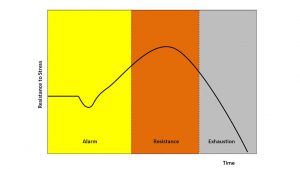How to Choose the Right Workout Plan – Top Fitness Coaches Advice
There are thousands of resources online when it comes to choosing a workout plan. But not all are equal! It’s tempting to download a workout plan from the latest YouTuber instead of paying for PT sessions. But there are often factors that are overlooked in these plans. It is easy to waste time on the wrong plan and find you’re going nowhere. In this post, I put together seminal advice from top fitness coaches, based on the essential principles of good program design. This will help you tell a good fitness plan from a bad one. You needn’t ever choose the wrong workout plan again!
Why Have a Workout Plan?
There’s a difference between regularly exercising, and working out following a plan. A fitness plan is essential to making progress. You might have found yourself in the gym, chopping and changing from one exercise to the next. At the time, it might have felt good. But ultimately you are still unsure you’re getting anywhere. You might have seen some change, but you’re not sure what exercises really worked for you. And as you go about your routine, you’re asking “is this the best exercise to fit my goals?” All this can leave you overwhelmed and demotivated.

Psychologists understand the importance of having a plan when it comes to motivation and reaching your goals. By following a structured fitness plan, you’re naturally practising behaviours known to harness motivation. These include goal-setting (Locke, 1996; Fenner et al., 2013), self-monitoring (Miller and Thayer, 1988), action planning (Schwarzer, 2014), and implementation intentions (Gollwitzer, 1999; Hagger and Luszczynska, 2014).
It might seem tempting to save money on PT sessions, and instead find an online workout plan. There are vast amounts to choose from. New fitness influencers pop up on Instagram and Youtube every day. Sadly, many people take advantage of the fact they have great physiques and will sell you a poorly designed workout plan. They will promise it will get you the same body they have. However, that physique likely won’t have been just down to the plan they’re selling you.
The Importance of the RIGHT Fitness Plan
If you want real progress, it’s not merely a case of picking a plan you like the look of. Even the best online plans fail to consider certain important factors that will stop you from making progress. Choosing a plan without knowledge of these factors is a risky business. Practising a regular exercise programme takes time and often money. Without knowing the key features of a well-planned exercise regime, you might end up wasting both.

Fitness plans come in many forms, but there are some overarching principles of good programme design, whatever plan you choose. By understanding these principles, you can ensure you’re selecting the right workout plan. I’ve been lucky enough to be privy to seminars by top fitness coaches. They design effective workout plans for many types of athlete. This post lets you in on their knowledge of the fundamentals of good workout programme design. Make sure you look out for all these factors in a workout plan before you decide to go ahead.
Features of a Good Workout Plan
1. Goal Orientation
Nick Grantham is a Performance Enhancement specialist for Olympic athletes as well as worldwide sports teams. He observes that the ‘purpose’ of many workout programmes is simply to ’empty the tank’, or leave you tired and feeling like you trained hard. While this is sometimes the by-product of a good session, this isn’t to be confused with a goal.
If a workout plan is not designed around a goal, this doesn’t give any way to measure progress. It also doesn’t provide any direction. Besides this, different fitness goals require entirely different types of training. For example, those looking for fat loss would benefit from an entirely different workout plan to those looking to gain muscle.
Most good programmes are written around one of the following categories of fitness goal:
- Body composition, e.g. fat loss; muscle gain.
- Performance, e.g. cardiorespiratory fitness; muscular strength; endurance.
The Specificity Principle
Choosing a single goal from these is advisable. Jason Tremblay of The Strength Guys is an International Powerlifting Federation champion. He emphasises that the focus of a workout plan should be on a single goal. He uses the Specificity Principle (Kraemer, 2002) to illustrate this. This principle states that our body adapts in line with the training we give it. If we want more strength, we should do strength training. If we are looking to increase our endurance, we should do endurance based exercise. Training for multiple goals might be suitable for a professional athlete. But for us ordinary folk with limited time, the more goals you try to hit, the more diluted the effect of your training.

A workout plan designed for a single goal will ensure all your efforts are focused. Besides that, we don’t have endless time to spend training. Making sure your time and effort are put into one type of training will increase the body’s adaptation in this area. This means you’re more likely to make progress. As a by-product, you might find other bonuses. For example, if your goal is increased strength, a nice side effect could be increased muscle mass. But a workout plan that tries to hit multiple types of goal will likely have you spreading yourself too thin. You only have so much time to train – dedicating this time around one goal will result in more significant progress.
So have a specific fitness goal in mind when searching for a workout plan. A good workout plan will be written around a single fitness goal. This helps you to maximise your progress and make the most of your time.
2. Continuity
A workout plan that changes every single week might seem exciting. You might have tried one of these fitness plans, feeling sore after every workout. But it’s a common misconception that this soreness means progress. And in fact, a fitness plan that involves too much change is not beneficial.
The GAS Principle
To explain this, let’s go into General Adaptation Syndrome (GAS). The GAS principle was formed by Canadian endocrinologist Hans Selye (1936). Through research and experimentation, he observed how our bodies respond to stress. Selye states that when the body is exposed to a stressor, it goes through certain stages. Firstly, a set of short term responses called ‘alarm’. This leads to resistance, the second stage. We will use these first two stages of the GAS principle to illustrate why continuity is key to progress.

The first stage, alarm, is involved when you do new exercises. Your body is exposed to a new stressor and experiences shock. As a result, you can feel soreness and stiffness after a workout. Through repeated exposure to the same stressors, the body learns to resist the stress. Resistance involves the body’s adaptation to stress. In the context of fitness, resistance occurs as the body responds to training. This can include hormonal adaptations, nervous system adaptations, and tissue building (Somerset, 2014). This is the ‘sweet spot’ and results in fitness progress. For your body to adapt and change, you must expose it to the same ‘stress’. Introducing the body to change too frequently keeps it stuck in the ‘alarm’ phase. It does not have time to learn to resist.
To give our bodies time to resist and adapt to exercises we must repeat them over time. This is how the body learns and progresses. Nick Grantham suggests 6-12 exposures are required for our bodies to adapt. That means a good fitness plan should stay consistent for around 6-12 weeks.
3. Progression
We’ve established that exercises should remain consistent over time in a good fitness plan. This allows our bodies time to adapt to them and for us to make progress. However, Grantham also emphasised the importance of progression. In a well-designed workout plan, the exercises stay constant, but the level of difficulty increases. He explains the reason for this using the Law of Accommodation.
The Law of Accommodation
This law is proposed by Vladimir Zatskiorsky PhD, an Olympic strength and conditioning consultant and professor of Kinesiology. According to this law, “the response of a biological object to a given constant stimulus decreases over time” (Zatsiorsky, 1995). In layman’s terms, this means that if we don’t increase the difficulty of our exercise, we don’t continue making progress. Zatsiorsky defines this as ‘habituation’.
The body has an incredible capacity for adaptation. You may have already experienced this. The first time you try a new workout, it might be a struggle to finish. But by the fourth or fifth time, it’ll seem a breeze. In line with the GAS principle, your body has resisted and adapted to the stress. It is now in Zatsiorsky’s ‘habituation’ stage. According to the Law of Accommodation, after ‘habituation’ comes ‘stagnation’. Regarding fitness progress, this means complete standstill.

You need to avoid habituation to keep progressing. If a workout plan does not get harder over time, this is a bad sign. Without increases in difficulty, there will not be a significant enough amount of stress placed on the body to trigger further adaptation. As Zatsiorsky and Kraemer (2006) explain, “training adaptation only takes place if the magnitude of training load is above habitual level”.
Progressive Overload
Therefore, increases in workout difficulty week to week are essential to progress. This is what fitness professionals call ‘progressive overload’. Progressive overload can take different forms depending on your goal. For those using a gym, this might mean small increases in weight each time you train. It could alternatively mean adding reps or sets to each workout. In basic terms, things just need to get harder over time. Look out for this when choosing your workout plan. Progressive overload is essential to ensure your body continues adapting, and you keep progressing.
So, we know a good workout plan gets progressively more difficult over time. This leads us to highlight an important point. A well-informed fitness plan is not exhausting every single session. Grantham states that this is probably the most overlooked factor in any workout plan. There is a common misconception that all workouts need to push you to your limit. However, maxing out in your very first session will not allow for progressive overload. A good workout plan leaves room to progress each time you train.

Not only does this ensure progressive overload, but it is in line with the GAS principle. Small increases in difficulty promote adaptation. We have covered how this fosters fitness progress. But putting your body into shock every time you train will only hinder the adaptation process. Furthermore, diving in at the deep end can lead to injury. If a workout plan requires you to do advanced exercises from the word ‘go’, this is a red flag. If it demands all your energy from the first session, this is also not a good sign. A well-written workout plan includes exercises that get progressively (and safely) more difficult over time.
5. Planned Recovery
Above, we covered the first two stages of Selye’s GAS principle – alarm, and resistance. After the shock of a new stimulus, the body then adapts. However, there is a third stage – exhaustion. After repeatedly adapting, the body becomes exhausted. This goes hand in hand with the final stage of Zatsiorsky’s final stage of the Law of Accommodation – deterioration.
As Dean Somerset, medical exercise specialist, states: “Intense exercise causes tons of stress: joint & ligament stress, muscular damage, neural fatigue, and hormone disruption”. If we continually train with no break, our bodies do not get a chance to repair. This means we cannot progress. Somerset says this is the “missing piece” in many fitness programmes. Nick Grantham agrees that this is the reason why many people do not see progress despite training all the time. He states that if his clients come in looking exhausted, he sends them home. The best exercise prescription for them, he says, is rest and sleep.

Mike Israetel, PhD is a doctor in Sports Physiology and a competitive athlete. He uses an analogy of a restaurant kitchen to highlight the importance of recovery. You start out with a sparkling clean kitchen, he says. However, over time, repeated use of the kitchen means cutlery becomes disorganised, dirt accumulates, and food goes off. Without taking a break to clean and reorganise, meals won’t be at a good standard. In the end, the kitchen might have to close for good. Without taking breaks from training, your body is unable to recover and make the same level of progress. In the end, as the Law of Accommodation states, the body deteriorates. Not only do you stop progressing, but you end up going backwards.
Rest Days and Deloads
Changes to your body do not happen during exercise – they happen after when the body is at rest. So rest days every week are a feature in any good fitness plan. Alongside this, a well-designed plan includes periods of lower intensity. Strength and conditioning professionals call this a “deload”. This means “a time period of training with lower volume, intensity or both” (Somerset, 2014). A typical “deload” lasts around a week and is typically included for every 3 to 5 weeks of training. This promotes the healing of joints, ligaments, and the central nervous system. In addition, it optimises your body for later adaptation down the line.
A “deload” is not just for those practising strength and conditioning training. Professional athletes of all types plan periods of less intense work into their training. Olympic athlete Bernard Lagat competed in his fifth Olympic games at age 41. He puts his longevity down to taking breaks of weeks at a time to let his body heal (The Globe and Mail, 2017). Extended breaks are also associated with a multitude of psychological benefits. Brad Stuhlberg, human performance and wellbeing coach, advocates periods of rest for this reason. Not only do these help the body recover, he explains, they also benefit the brain. He says that recovery periods promote consolidation of information and emotions. They will also revitalise your motivation. Make sure your workout plan includes rest – it’s a vital part of maintaining fitness.
You’re Ready to Choose the Right Workout Plan
You are now well-equipped with knowledge of the fundamentals of workout programme design. A good workout plan is usually designed around a specific fitness goal. Alongside this, it has continuity, using the same exercises for 6-12 weeks. Although the workouts remain constant, the level of difficulty increases.
Furthermore, any well-designed fitness plan includes some planned recovery time. Recovery consists of both rest days every week, alongside a ‘deload’ week or extended rest period. So now you know what to look for, you can choose the right fitness plan for you.
Shredify app delivers tailored workouts based on your body goal. They progress over time, allow for rest, and are flexible to fit your lifestyle. So, why not pick your body goal, and start a Shredify plan today?
